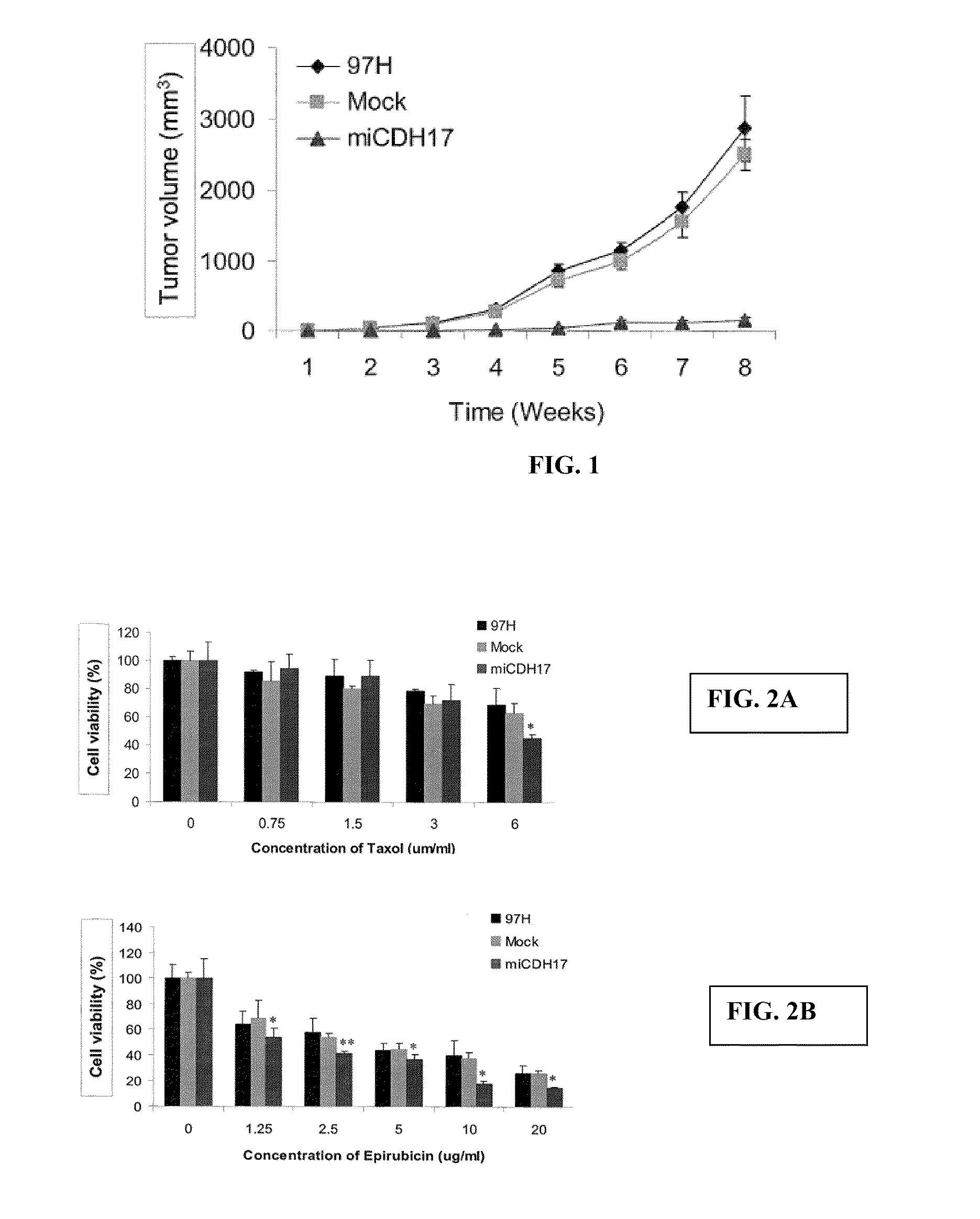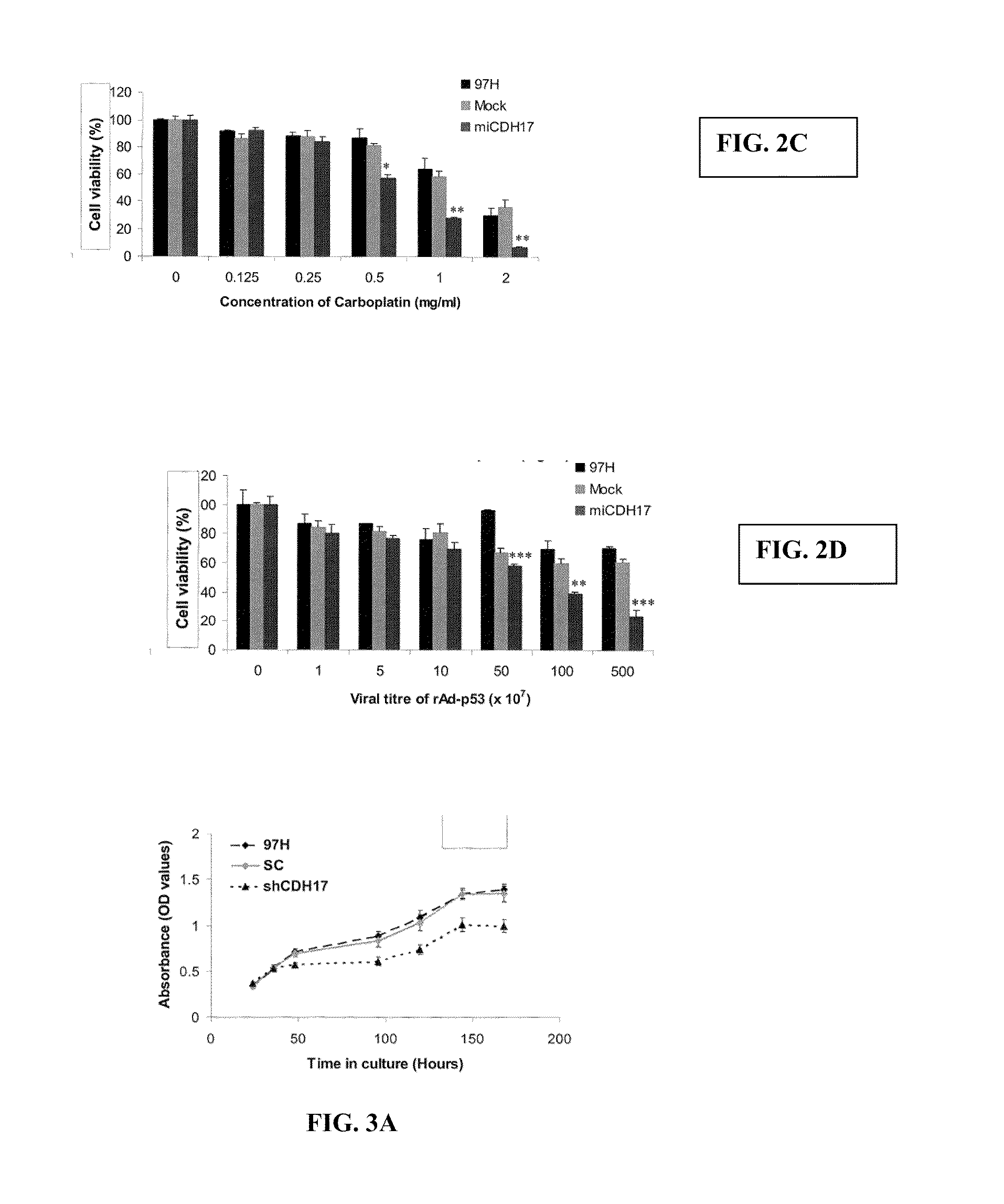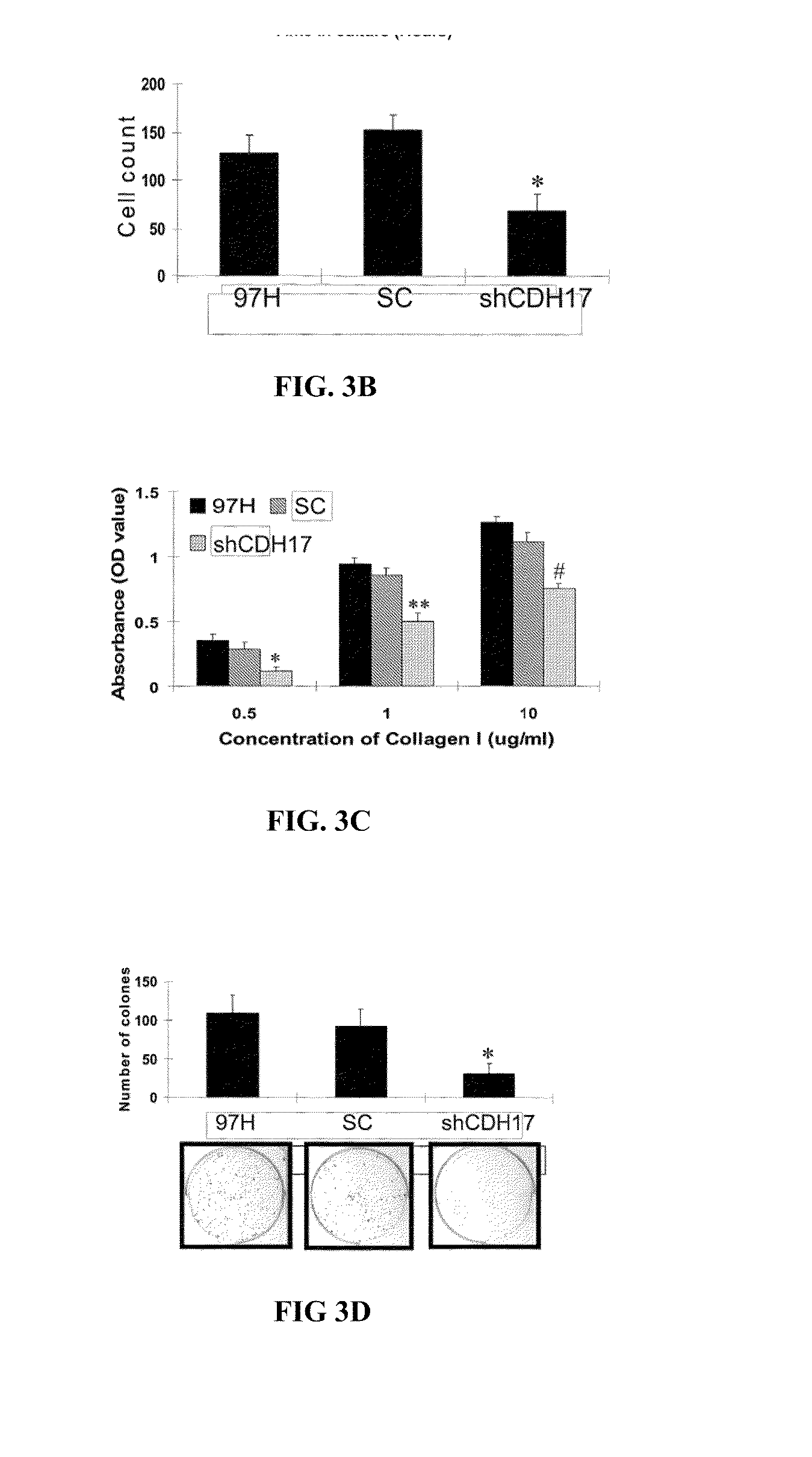Cadherin-17 as diagnostic marker and therapeutic target for liver cancer
a liver cancer and cadherin-17 technology, applied in the field of detection and inhibition of cancer, can solve the problems of high death rate, hcc is often refractory to all current chemotherapies, and there is no definite cure for hcc patients, so as to suppress the expression of cdh17 gene, and suppress the effect of cdh17 gene expression
- Summary
- Abstract
- Description
- Claims
- Application Information
AI Technical Summary
Benefits of technology
Problems solved by technology
Method used
Image
Examples
example 1
CDH17 mRNA Levels in Human HCC Cell Lines and Cancer Patients
[0319]Materials and Methods
[0320]The CDH17 mRNA level in a panel of human HCC cell lines with different metastatic potential was measured using qPCR analysis. The control cell line MIHA was an immortalized normal human hepatocyte, which expressed very little or undetectable CDH17. Primary HCC cell lines expressed some CDH17 transcript while strong expression was seen in their metastatic counterparts (e.g. MHCC97-H, MHCC97-L and H2-M).
[0321]These cell line data were supported by results from 46 pairs of tumor and adjacent liver tissues from HCC patients who received curative surgery. Table 3 below was prepared based on the correlation analysis performed in a total of 46 HCC patients with defined clinical data. mRNA was extracted in clinical samples using standard protocol and reverse transcribed to cDNA for determining the expression of CDH17 transcript using quantitative polymerase chain reaction (qPCR). Categorical parame...
example 2
CDH17 Levels Predict Microcvascular Invasion and Disease
[0324]Prognosis in Cancer Patients
[0325]The data above was further confirmed by Ding, et al., Cancer, 115 July, 2009, the contents of which are incorporated herein by reference. Ding, et al., evaluated CDH17 expression in three HBV-positive HCC cell lines and in tissued samples from HCC cancer patients. Western blot and immunofluresence analysis showed a significant increase in CDH17 protein levels in high-invasive HCCLM3 cells compared to low-invasive Hep3B and PLC / PRF / 5 cells. The effect of CDH17 expression on cell migration (a characteristic of metastasis) was investigated in the high-invasive cell line using a wound healing migration assay. Using SiRNA-mediated inhibition, Ding, et al., showed that CDH17 inhibition resulted in a significant delay in wound closure in the HCCLM3-SiRNA-treated cells, when compared to the control cells, confirming the involvement of CDH17 in cancer cell migration. In a Matrigel invasion assay, ...
example 3
Reduction in Size of Tumor Xenograft After Silencing the Expression of CDH17 in MHCC97-H (97H) in Liver Tumor Cells
[0327]Materials and Methods
[0328]97H cells are derived from liver tumor cells with high metastatic potentials. These cells were transfected stably with either vector alone (Mock) or short hairpin-RNA (shRNA) (see SEQ ID NO: 2) targeting exon 3 (SEQ ID NO: 5) of CDH17 (shCDH17). 97H cells with (Mock or shCDH17) or without (97H) transfection were inoculated in nude mice for a period of up to 8 weeks. Changes in tumor volume were quantified and represented in the chart.
[0329]Results
[0330]The results are shown in FIG. 1. Growth of subcutaneous tumors was observed visually and using a fluorescent imaging technique four weeks after cell inoculation. Appearance and size of the subcutaneous tumors were shown after dissecting the tumors from mice on 8-week after cell inoculation. A significant reduction in size of the tumor xenografts was observed when the expression of CDH 17 w...
PUM
| Property | Measurement | Unit |
|---|---|---|
| Ka | aaaaa | aaaaa |
| threshold concentration | aaaaa | aaaaa |
| threshold concentration | aaaaa | aaaaa |
Abstract
Description
Claims
Application Information
 Login to View More
Login to View More - R&D
- Intellectual Property
- Life Sciences
- Materials
- Tech Scout
- Unparalleled Data Quality
- Higher Quality Content
- 60% Fewer Hallucinations
Browse by: Latest US Patents, China's latest patents, Technical Efficacy Thesaurus, Application Domain, Technology Topic, Popular Technical Reports.
© 2025 PatSnap. All rights reserved.Legal|Privacy policy|Modern Slavery Act Transparency Statement|Sitemap|About US| Contact US: help@patsnap.com



